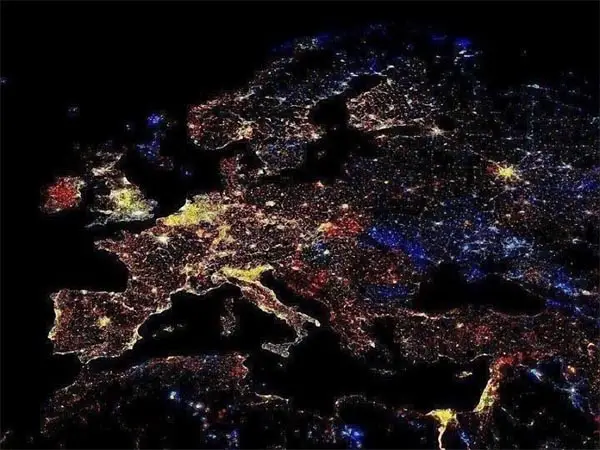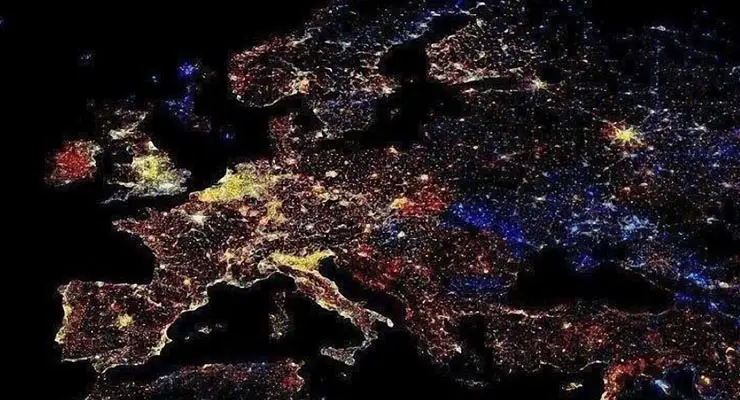Does a photo show New Year fireworks in Europe from space? Fact Check
A photo is circulating social media that claims to show a satellite image of the New Year’s fireworks across Europe, as seen from space.
However, this isn’t the first time this photo has spread across social media. In fact, with varying degrees of success, the photo below has spread across the likes of Twitter and Facebook for the last 5 or 6 years. Always claiming to show satellite images of the fireworks for the New Year’s celebrations just past.

However, the photo isn’t just old. It’s also got nothing to do with New Year’s or fireworks. The reality is that the photo doesn’t show fireworks at all, nor was it likely to have been taken on New Year’s.
In fact, the photo is a composite image from the National Oceanic and Atmospheric Administration (NOAA) and shows the changes in light intensity in Europe between the years 1993 and 2003.
Sponsored Content. Continued below...
According to Science Photo Library, the different coloured lights in the image illustrate differences in light intensity during that decade. For example, dark blue lights are an example of lights that have weakened as the decade progressed, and yellow and white lights show the opposite. The caption on Science Photo Library reads –
Europe at night, showing the change in illumination from 1993-2003. This data is based on satellite observations. Lights are colour-coded. Red lights appeared during that period. Orange and yellow areas are regions of high and low intensity lighting respectively that increased in brightness over the ten years. Grey areas are unchanged. Pale blue and dark blue areas are of low and high intensity lighting that decreased in brightness. Very dark blue areas were present in 1993 and had disappeared by 2003. Much of western and central Europe has brightened considerably. Some North Sea gas fields closed in the period.
However, pranksters have used the different coloured lights to trick Internet users into believing the image shows fireworks, which of course it does not. For one, the image shows the entirety of Europe, which has multiple different time zones and as such would not release their fireworks at the very same moment, and the lack of cloud coverage over any of the image also exposes the image as a composite, not a photo.
However, none of this has stopped Internet users sharing the image in early January of each year since 2013.
Keep up-to-date with all our latest articles. Follow us on Facebook, Instagram and Twitter.
Continued below...
Thanks for reading! But before you go… as part of our latest series of articles on how to earn a little extra cash using the Internet (without getting scammed) we have been looking into how you can earn gift vouchers (like Amazon vouchers) using reward-per-action websites such as SwagBucks. If you are interested we even have our own sign-up code to get you started. Want to learn more? We discuss it here. (Or you can just sign-up here and use code Nonsense70SB when registering.)
Become a Facebook Supporter. For 0.99p (~$1.30) a month you can become a Facebook fan, meaning you get an optional Supporter Badge when you comment on our Facebook posts, as well as discounts on our merchandise. You can subscribe here (cancel anytime.)
